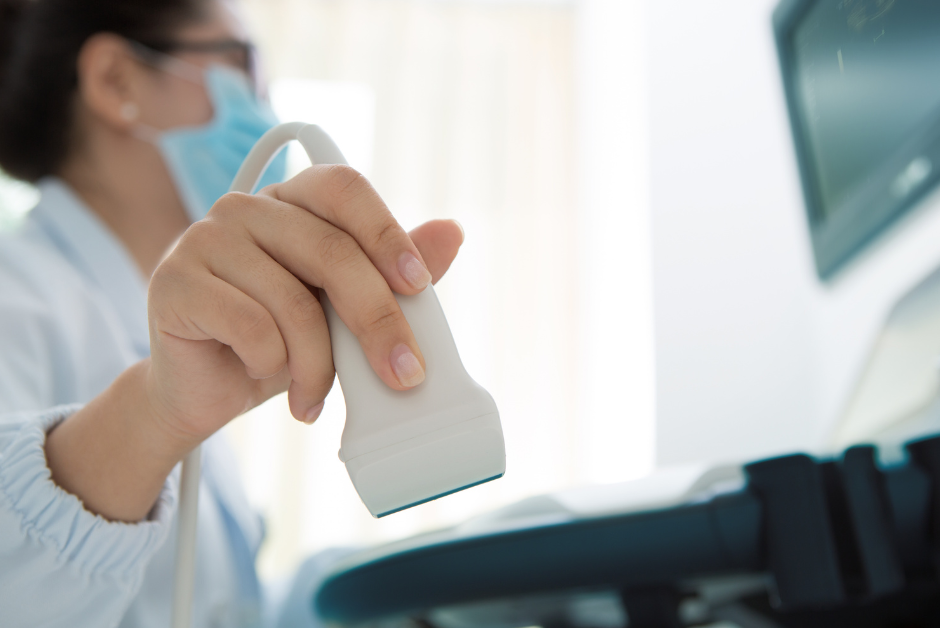by Dr. Vikram Shankar
Time and again, I’ve seen providers hesitant to use ultrasound. The ultrasound has such utility in daily practice that it has become an indispensable part of the ED. Ultrasound is intrinsically rewarding because once you learn the basics, you realize how it speeds up your ED life. Work smarter, not harder.
Here’s a familiar scenario. A patient comes in with right upper quadrant abdominal pain. There are many things this could be: gallstones, inflammation of the pancreas, a small bowel obstruction, GERD, etc. The process can take some time to work up and manage: Treat pain, get the blood work, reassess and consider advanced imaging such as a CT, only to find out the patient has a gallstone, necessitating a formal ultrasound 3 hours into the course.
But using an informal ultrasound the moment the patient arrives in the room – placing the probe on the right upper quadrant and seeing a giant stone in the gallbladder – can save you a tremendous amount of time.
And really the hardest part of learning ultrasound is getting started. I totally get this hump. But once you learn the basics and incorporate this into your practice, you won’t go back. And the more familiar you get, the more useful you’ll find it.

Here are some major impediments I’ve found to getting started:
#1. “The machine looks intimidating.”
This is very true. No question about it – it looks like something from NASA. The truth is you don’t need the vast majority of these buttons to learn the basics. After years of using ultrasound, I still ignore over half the machine. Don’t let this stop you.
#2. Getting frustrated with the anatomical orientation.
A very common source of frustration I see is the challenge of understanding how the image on the screen maps onto the patient’s three-dimensional anatomy. For example, when you see the heart on screen, it can be confusing which of the four chambers you are looking at. Is the right ventricle on the right of the screen, or is that the left ventricle?
Of course it’s important to recognize the orientation of anatomy. However, this will naturally be cemented with time. I believe this is super important; don’t feel like you need to master the orientation right away. The truth is, there are only a finite number of images you encounter on ultrasound. My advice is: get used to seeing these same images enough and trust that the orientation will make sense over time once the image gets implanted into your brain.
#3. “It is just too much to learn.”
Start with one small exam and go from there. For example, I suggest that you learn how to detect a popped lung (pneumothorax). If you just stick to this one test and get good at it, you’ll be amazed at how this skill and knowledge evolves into other anatomical regions.
If you are more ambitious as a starting point, I would recommend learning the RUSH exam (Rapid Ultrasound for Shock and Hypotension). I think this is the single highest yield exam. It is an ultrasound exam intended for a quick bedside assessment for patients in undifferentiated shock. The beauty of the RUSH exam is not only its utility in critical patients, but also that it covers a wide variety of anatomical regions. If you learn this exam thoroughly it will walk you through other territories including the heart, major blood vessels, abdomen, lung, and extremities. This will help you with the patient whose cause of critically low blood pressure is unknown, a clinical situation that is often a challenge to assess and manage… and unfortunately very common.
#4. “Only doctors need to use the ultrasound.”
Not true at all. It’s for everyone – physicians, PAs, NPs, nurses, etc. I see nurses use ultrasound all the time to obtain peripheral vascular access. It’s a quick and easy way to confirm an intrauterine pregnancy and measure the heart rate of a fetus in triage.
It can be used effortlessly by anyone to assess urinary retention, retained foreign bodies, or abscesses… The list goes on and on.
Getting Acclimated to Ultrasound Use
Given that the hardest part of overcoming your ultrasound fear is getting past the initial hump, here are some tips to get initiated into ultrasound use.
- Tag along with a provider who uses ultrasound regularly.
- Watch a YouTube clip. Here’s a good one on the RUSH exam.
- There are workshops on ultrasound throughout the US. This is a great way to get started and learn from an expert.
- If you have the means and interest, there are a variety of hand-held portable ultrasounds that can be set up conveniently with your phone. I use one regularly, and in many regards it is far more useful than my stethoscope.
Lastly, if you are on shift with me, don’t hesitate to tag along and ask me any questions. I’m still learning and will probably ask you questions too.


